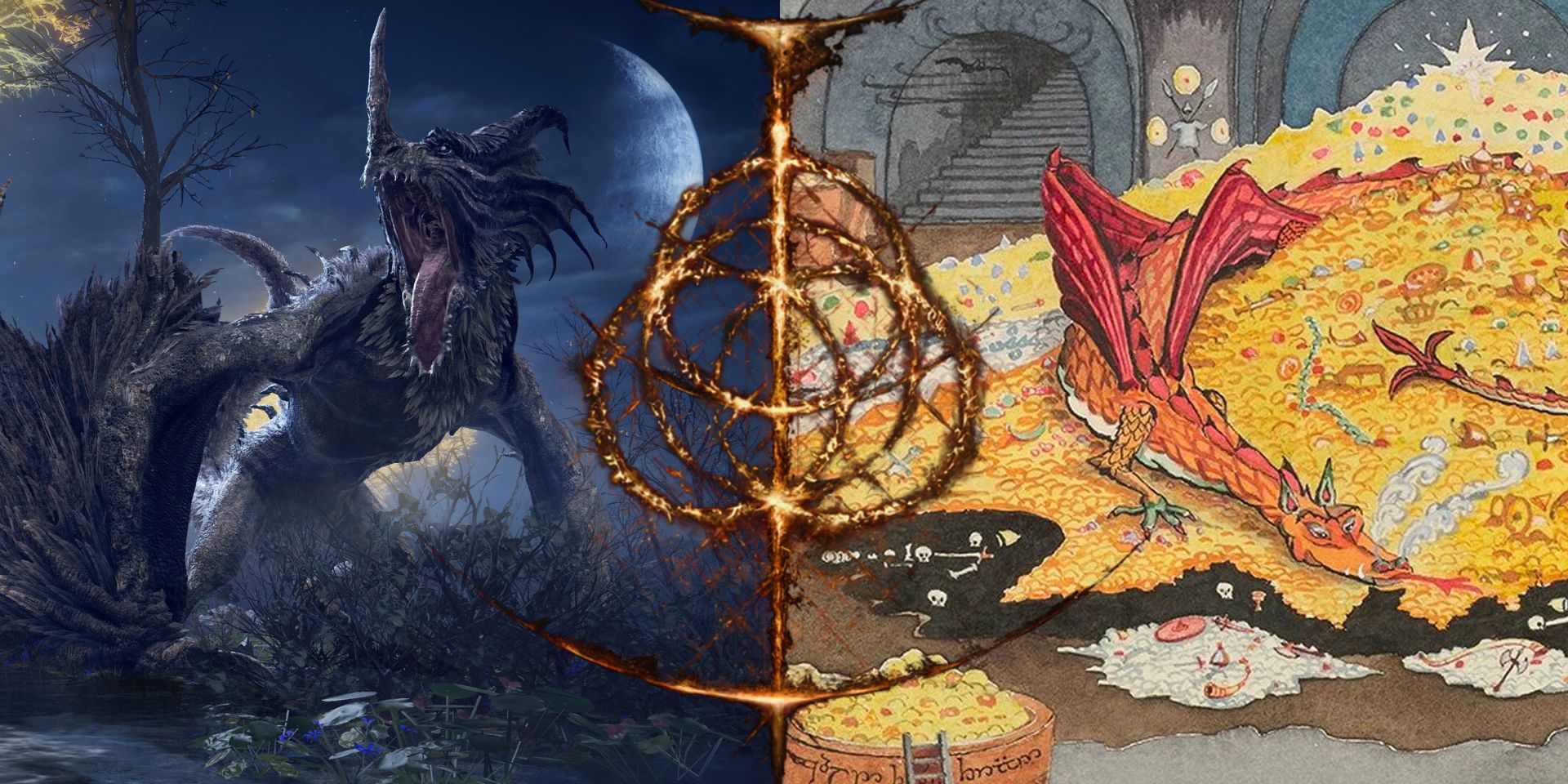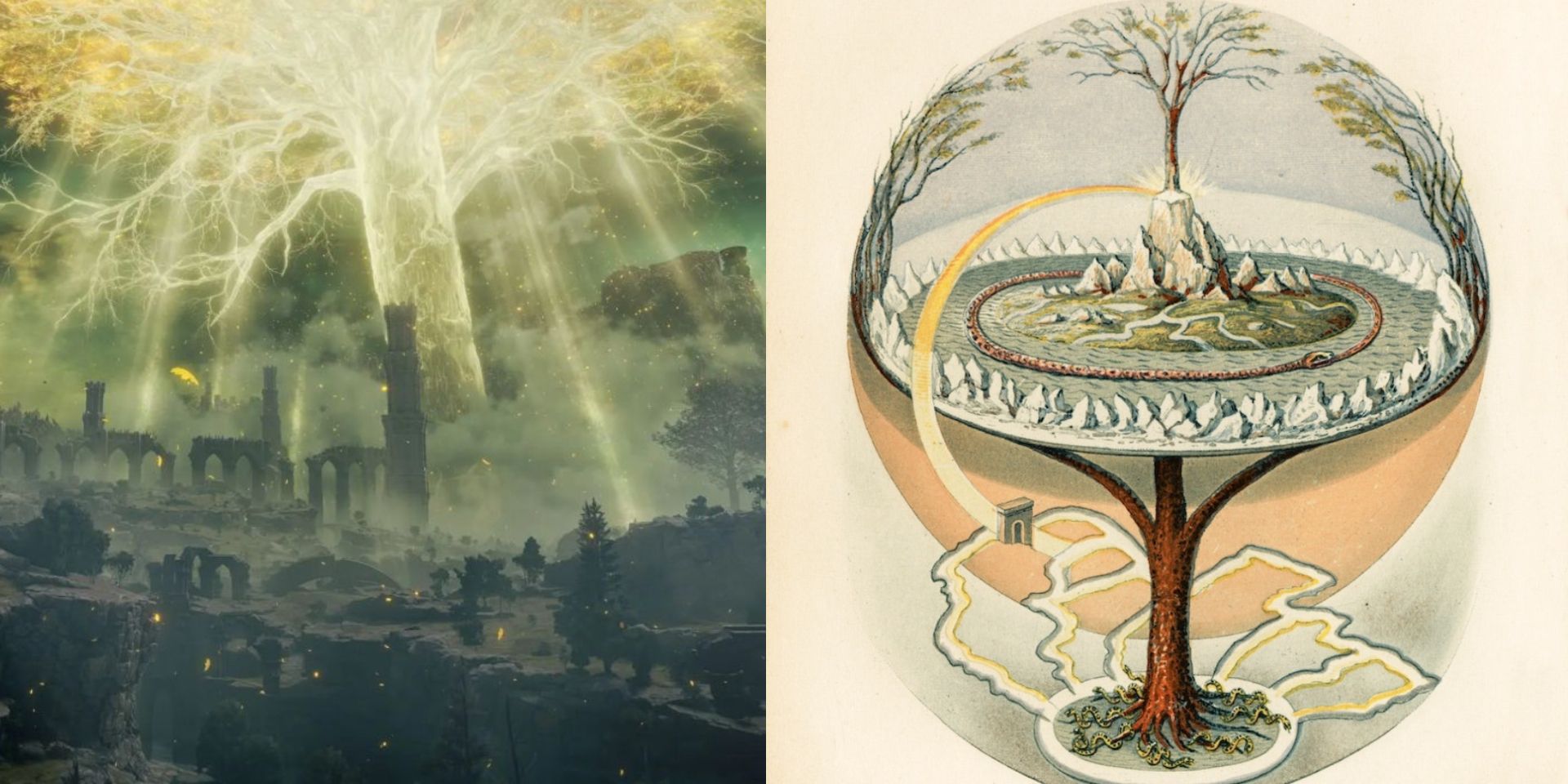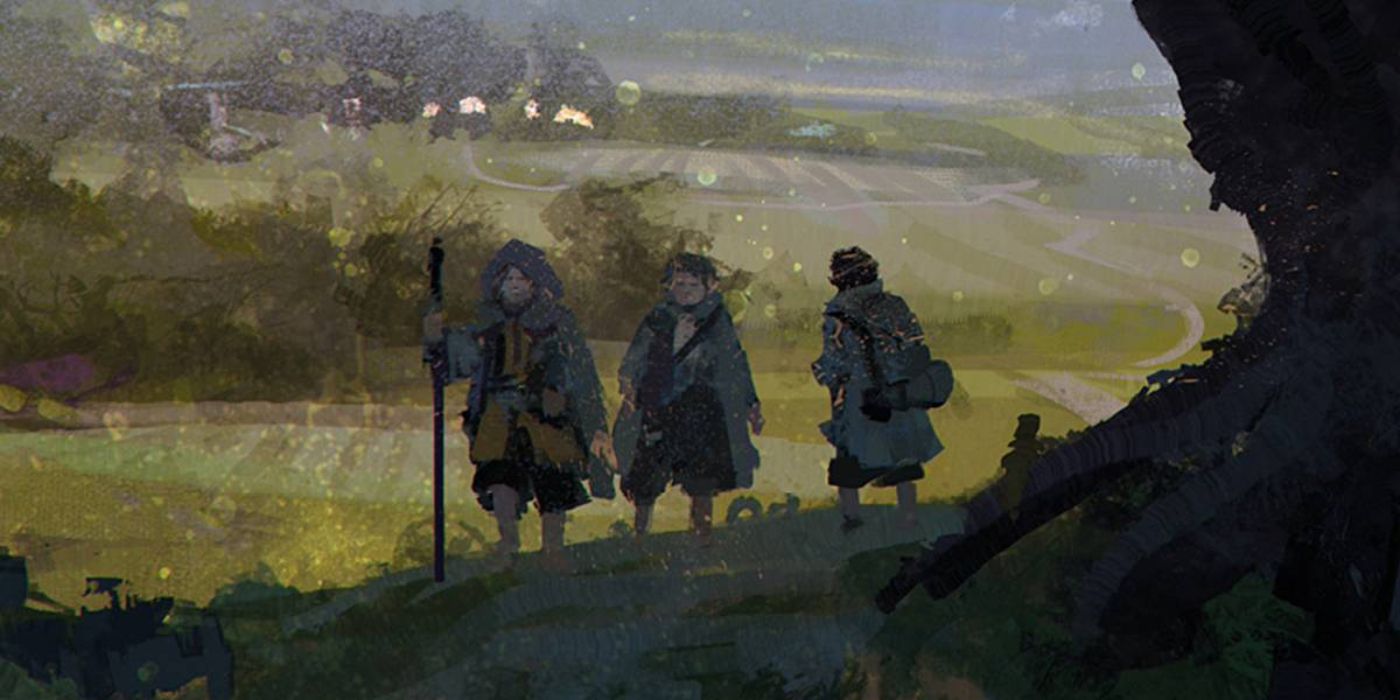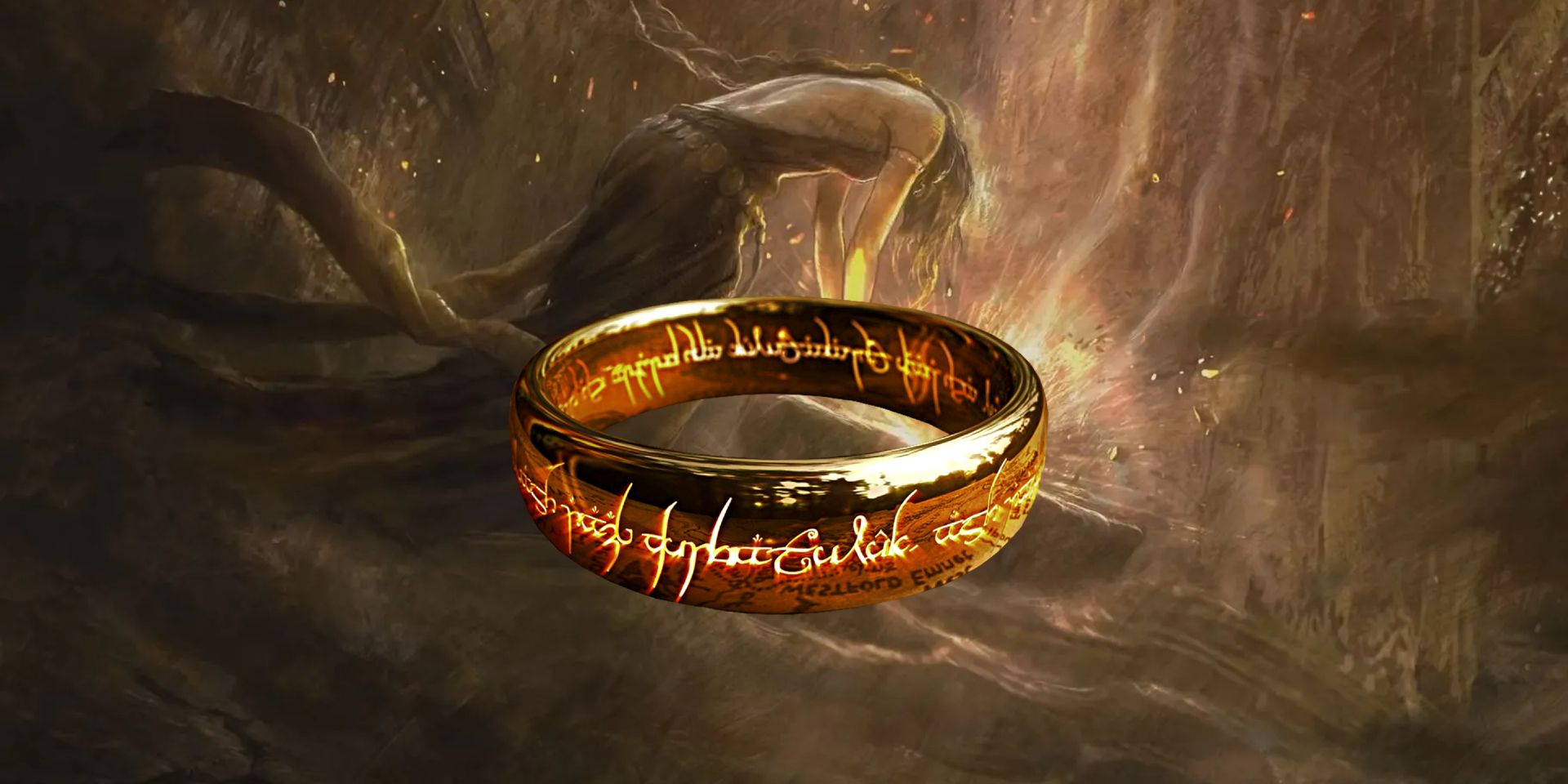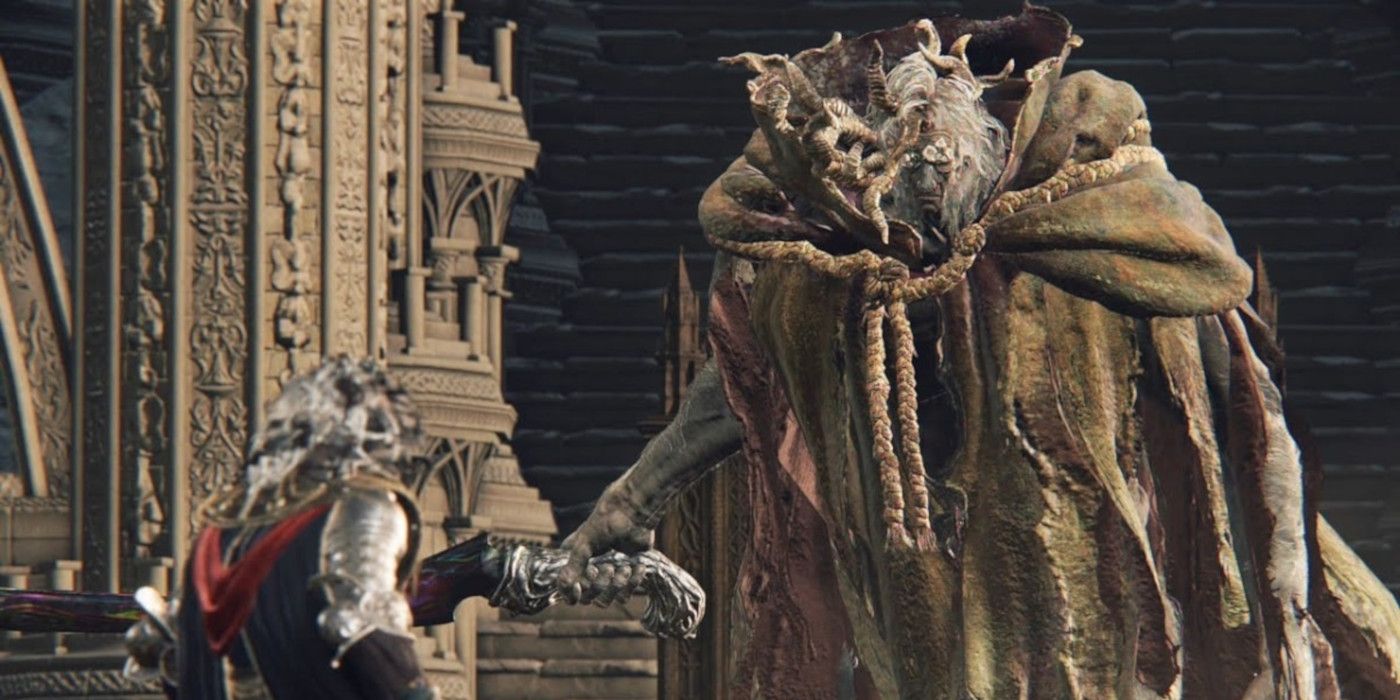Just as J.R.R. Tolkien took steps to distinguish his The Lord Of The Rings trilogy from works like Wagner's Ring Cycle, so to did Hidetaka Miyazaki, and George R.R. Martin of Elden Ring make sure the gameplay and story of their dark fantasy action RPG wouldn't be seen as a rip-off of LOTR. The story and setting of Elden Ring is very much full of strange world-building details and characters that go in different, original directions from LOTR; but, Elden Ring and The Lord Of The Rings draw from the same wellspring of ancient mythology and ask similar questions about the perils of power and authority.
In FromSoftware's most recent fantasy RPG, the titular Elden Ring isn't actually a physical ring, but a floating golden rune of circles and lines capable of dictating rules of reality such as Fate or Death; in contrast to the Fellowship's quest to destroy the One Ring in LOTR, the goal of Tarnished is to reforge the Elden Ring and reclaim its power. Unlike in previous FromSoftware RPGs such as Dark Souls, players can't equip magical rings like Tolkien's Rings of Power; instead, they wear Talismans and equip Great Runes. These are just a few examples of how Elden Ring explores motifs like those in Lord of the Rings, then expresses those motifs in different ways.
Elden Ring And Lord Of The Rings Both Draw Inspiration From Norse And Abrahamic Myth
When crafting his Middle Earth fantasy setting, J.R.R. Tolkien drew from a range of ancient epics. From the Old English epic Beowulf came the treasure-plundering plots and covetous dragons of The Hobbit. The Finnish national epic called the Kalevala inspired the D&D Bard-like mythic musicians and creation myths of The Silmarillion. From Norse myth came legends about Odin, who roamed the lands in gray clothing like Gandalf, and cursed magical rings that would doom their bearers. Finally, Tolkien’s own Catholic upbringing infused The Lord Of The Rings with very Christian themes of forgiveness, compassion, and rising above temptation.
The setting and history of Elden Ring also draws a lot of inspiration from Norse Myth, particularly the tales described in the Prose Edda. Like the World Tree said to hold up the world, the Erdtree stretches across the game’s sky, while the mighty yet fallible Demigods mirror the Aesir and Vanir deities. The enmity between Marika’s Golden Order, the flame-tending Fire Giants, and the gluttonous Serpents of Mount Gelmir match the mythical rivalry between the Aesir, the Jotuns, and the world serpent Jormungander. Lastly, the statues of Marika and Radagon depict these deities in Christ-like crucifixion postures, while the Golden Order they rule has a monotheistic creed like the Eastern Roman Empire.
Both Elden Ring And Lord Of The Rings Reject Explicit Allegory In Their Narratives
As a genre-transforming fantasy author, a polyglot expert in ancient languages, and a fan of myth and "fairy stories," J.R.R. Tolkien infamously disliked allegory and stories with explicit morals. In a famous quote, Tolkien points out how many people "confuse applicability with allegory, but the one resides in the freedom of the reader, and the other in the purposed domination of the author." Consequentially, his Lord of the Rings trilogy was not a metaphor for World War 2 or a fable designed to teach a life lesson, but just a well-written fantasy saga readers could enjoy and uses as a mirror for examining their own lives, beliefs, and principles.
Nearly every Hidetaka Miyazaki-directed FromSoftware Soulsborne game, starting with Demon's Souls and culminating in Elden Ring, takes a similar approach by declining to make moral judgments or flat declarations of who is "Good" or "Bad." NPCs within Elden Ring's Lands Between setting may offer their own opinions and argue passionately about the righteousness of their ideology or factions, but their worldviews are biased, their perspectives limited. Players are free to analyze the game's fragmented lore, judge certain non-playable characters, and decide for themselves what the right choices (and best or worst endings of Elden Ring) are.
Both Elden Ring And Lord Of The Rings Explore The Folly Of Tyranny And Domination
Near the end of The Fellowship Of The Ring (the book and the movie), Frodo offers the One Ring to Galadriel, a golden-haired Elf of unsurpassed beauty, wisdom, and serenity. In a famous (and oft parodied scene) Galadriel admits that taking the One Ring would make her a tyrant as bad as Sauron, a queen as “beautiful and terrible as the dawn” whose subjects would “love her and despair.” It may be no coincidence that the lore descriptions of Elden Ring’s Queen Marika, a beautiful golden-haired woman of the long-lived Numen race, vessel of the reality-shaping Elden Ring, match Galadriel’s own description of her worst self.
The antagonists of The Lord Of The Rings - The Dark Lord Sauron and his traitor wizard Saruman - are villains because they’ve been consumed by the desire to dominate, their once-noble ideals of bringing order to the world forgotten. Depending on how one interprets the backstory of Elden Ring, Queen Marika can be seen as a Sauron who succeeded at taking over the world, only to realize she’d become a slave to their power and a prisoner of their own empire. In the worlds of Elden Ring and The Lord Of The Rings, seeking mastery at all costs leads to death and misery for both the conquered and conquered, while being able to give up power makes one free.
Elden Ring And Lord Of The Rings Do Differ In Their Perspectives On Divinity And Fantasy Species
The biggest difference between Elden Ring versus The Lord Of The Rings books and the One Ring RPG may be how their divinities and monsters are portrayed. In LOTR, the Valar gods are saintly yet distant, while the Dark Lords, Orcs, and Trolls are consumed by ambition, rebelling against the world’s order and despoiling nature. Elden Ring takes a more humanistic approach with its fantasy worldbuilding. In the Lands Between, the Outer Gods actively meddle with the world and have dangerously alien desires, while non-humans such as Misbegotten, Omens, or Those Who Live In Death aren’t innately evil, but are persecuted by Golden Order zealots craving “an absolute evil to contend with.”

